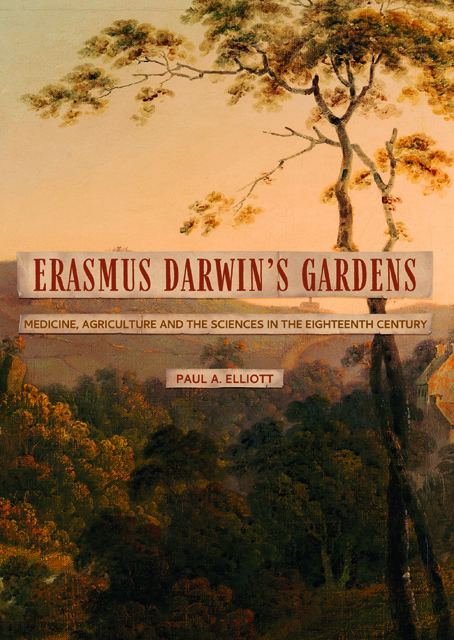Book contents
- Frontmatter
- Contents
- List of Figures
- Acknowledgements
- A Note on Plant Names and Identification
- Introduction
- 1 Lichfield and Derby Gardens
- 2 Medicinal Plants and Their Places
- 3 Agricultural Improvement: Enclosure and the Application of Science and Technology
- 4 Vegetable Physiology, Technology and Agriculture
- 5 Vegetable Pathology and Medicine
- 6 Among the Animals
- 7 Animal Diseases
- 8 ‘Eating of the Tree of Knowledge’: Forestry, Arboriculture and Medicine
- 9 Trees in the Economy Of Nature
- Conclusion
- Select Bibliography
- Index
- Garden and Landscape History
4 - Vegetable Physiology, Technology and Agriculture
Published online by Cambridge University Press: 14 January 2023
- Frontmatter
- Contents
- List of Figures
- Acknowledgements
- A Note on Plant Names and Identification
- Introduction
- 1 Lichfield and Derby Gardens
- 2 Medicinal Plants and Their Places
- 3 Agricultural Improvement: Enclosure and the Application of Science and Technology
- 4 Vegetable Physiology, Technology and Agriculture
- 5 Vegetable Pathology and Medicine
- 6 Among the Animals
- 7 Animal Diseases
- 8 ‘Eating of the Tree of Knowledge’: Forestry, Arboriculture and Medicine
- 9 Trees in the Economy Of Nature
- Conclusion
- Select Bibliography
- Index
- Garden and Landscape History
Summary
As well as supporting agricultural improvement, Darwin believed that there were specific ways in which the sciences could be applied to increase productivity in farming. This belief was founded upon practical observations of midlands agriculture and industry, gardening and horticultural experiments and the reading of major studies on these and related subjects, such as vegetable physiology. Phytologia, Darwin’s study of agriculture and gardening, was divided into three parts which dealt firstly with the physiology of vegetation, secondly with the economy of vegetation and lastly with agriculture and horticulture, while an appendix contained details for an ‘improved construction of the drill plough’ he had made with a new design for a seed-box by Thomas Swanwick (1755–1814). The first part, on vegetable physiology, examined what Darwin referred to as the buds, absorbent and umbilical vessels, pulmonary arteries and veins, aortal arteries and veins, glands and secretions, organs of reproduction and muscles, nerves and brain of vegetables. The language utilised underscored his repeatedly asserted belief in analogies between animal and vegetable bodies, and therefore the relevance of his medical knowledge and experience for the study of agriculture and horticulture. In the introduction Darwin made this relationship explicit, declaring that his book was a ‘supplement’ to Zoonomia (which had itself been partly modelled on the Linnaean system) because it was ‘properly a continuation of the subject’. Some of the material had already appeared in the latter, while the production of Phytologia aided him in preparing the much expanded third edition of Zoonomia (1801).
The second part of Phytologia, on the ‘economy of vegetation’, developed from observations made in The Economy of Vegetation (1791) that hinged upon what Maureen McNeil has called Darwin’s notion of ‘interrelated’ or ‘interlocking’ economies of vegetable, human and natural worlds, which was similar to the emphasis upon the ‘interconnectivity of life systems’ advocated by his friend Joseph Priestley (1733–1804) in his experiments on airs. He noted how vegetables replenished air and water and supported animal life; and, like animals, plants were distinctive organic entities with their own laws of motion which needed to be understood holistically in relation to their ‘total operations’ rather than in isolation.
- Type
- Chapter
- Information
- Erasmus Darwin's GardensMedicine, Agriculture and the Sciences in the Eighteenth Century, pp. 117 - 148Publisher: Boydell & BrewerPrint publication year: 2021



